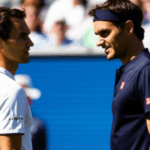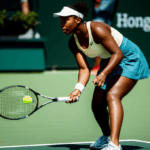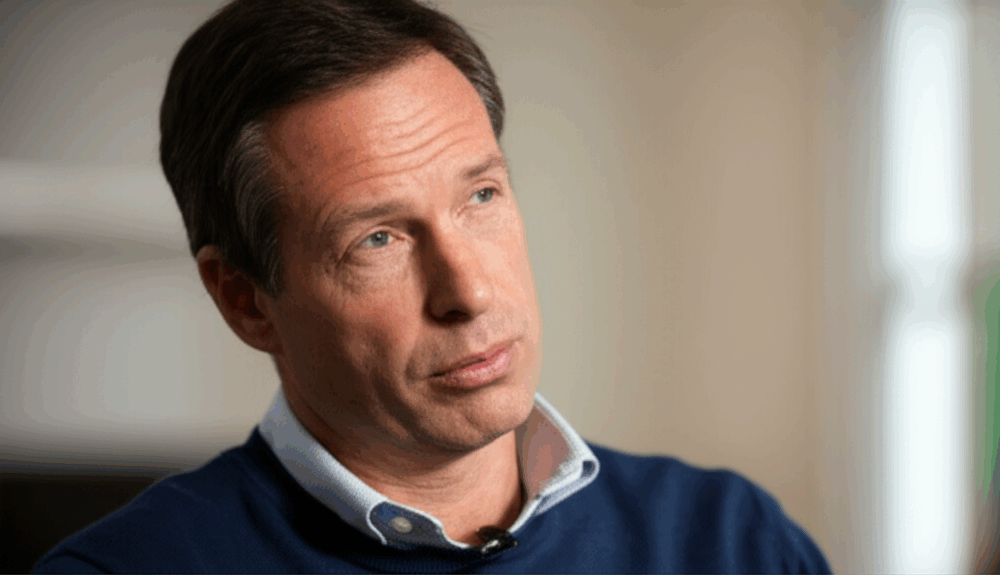In the unpredictable theatre of elite sport, where narratives often swing wildly with each serve and volley, few careers have been scrutinized as intensely as Emma Raducanu’s. After her historic US Open triumph, the young Briton faced an unprecedented level of public and media attention, often accompanied by sharp criticism during her subsequent injury struggles and strategic decisions. Amidst this whirlwind, former British No. 1 Tim Henman has emerged as a consistent voice of reason, offering a clear and patient message to her detractors as Raducanu plots her definitive return to the top echelons of tennis.

Understanding the Landscape: The Burden of Early Success
Emma Raducanu’s meteoric rise to the 2021 US Open title, emerging from qualifying to Grand Slam glory without dropping a set, was unprecedented. This fairytale victory instantly propelled her into the global spotlight, an intense glare that few athletes, especially at such a young age, are prepared for. While her success was celebrated, it also set an impossibly high bar, leading to immense pressure and disproportionate criticism when her journey inevitably hit hurdles. Her subsequent battles with injuries, including surgeries on both wrists and an ankle, coupled with changes in her coaching setup, fueled a narrative of struggle rather than progress.
The Unwavering Support of Tim Henman
Tim Henman, a revered figure in British tennis, has consistently championed Raducanu, urging patience and a more nuanced perspective from fans and critics alike. His message underscores the fundamental challenges of professional tennis and the unique circumstances of Raducanu’s career trajectory.

The Core of Henman’s Argument: Patience and Perspective
Henman’s primary message revolves around the critical need for patience. He emphasizes that Raducanu, despite her Grand Slam title, is still massively inexperienced in terms of the number of tour-level matches played in her professional career. This perspective is crucial, as many observers tend to forget that her US Open win occurred before she had built a substantial foundation of professional match play.
Managing Expectations for a Long-Term Career
Speaking to Eurosport, Henman stated, “It’s massively exciting to have Raducanu coming back. I think it’s important that everybody around tennis who’s a fan, who’s excited to see Raducanu back on the court, manages their expectations.” He highlighted that she had been out for a long time due to injuries and emphasized that her age, 21, means she has “the next ten years in front of her.” The focus, according to Henman, should be on building a solid foundation to allow her undeniable talents to flourish over the long term.

Prioritizing Health and Physical Resilience
A significant part of Henman’s defense of Raducanu involves acknowledging her injury struggles. He has consistently stressed that staying injury-free is paramount for her to maintain momentum and reach her full potential. He recognizes that her return from multiple surgeries has been a rebuilding process.
The Importance of Match Volume Over Immediate Results
Henman has pointed out that when Raducanu has been on the court, “she played very well.” He suggests that her path to improvement lies in increasing her volume of tennis and playing in more big tournaments. He also understands that missing major tournaments, even if due to strategic decisions or lack of direct entry, is part of the learning curve for a player still finding her rhythm post-injury.

Addressing Specific Criticisms: Scheduling and Progress
Henman has directly addressed some of the more pointed criticisms leveled at Raducanu, particularly concerning her tournament schedule and perceived lack of progress.
On Skipping Tournaments and Wildcards
When Raducanu faced scrutiny for her decisions regarding qualifying rounds or not securing wildcards into certain WTA 1000 events, Henman maintained a supportive stance. He argued that missing a couple of tournaments out of a 52-week year is not a “big deal” and that she has played plenty of events this year. He believes that with continued progress, she will soon be a direct entry into the biggest events, and her ranking will naturally improve.
Signs of Progress and Future Potential
Despite the fluctuations in her ranking and results, Henman sees clear evidence of Raducanu moving in the right direction. He noted her impressive jump from outside the top 300 to World No. 57 following her comeback season. He remains confident she can compete for major titles again and has even predicted her ending a season inside the world’s top 20, contingent on her ability to play a full schedule and maintain consistency.

The “Borderline Obsession” with Scrutiny
Perhaps one of Henman’s most direct messages to critics is his observation of an “almost borderline obsession” with scrutinizing every element of Raducanu’s game and career choices. He believes this level of intense examination is unwarranted and detrimental. He advocates for patience, emphasizing that Raducanu is continuously building her fitness, strength, and speed, and her inherent talent is undeniable.
A Call for Understanding and Long-Term Vision
Henman’s consistent defense of Emma Raducanu serves as a vital reminder that an athlete’s journey is rarely linear, especially after significant success at a young age and subsequent injury setbacks. His message to critics is clear: temper expectations, show patience, understand the complexities of physical rehabilitation, and focus on the long-term development of a player with immense talent and a decade of her career still ahead. His perspective encourages a shift from immediate results to a broader appreciation of the foundational work and resilience required to succeed at the highest levels of professional tennis.








No Comment! Be the first one.